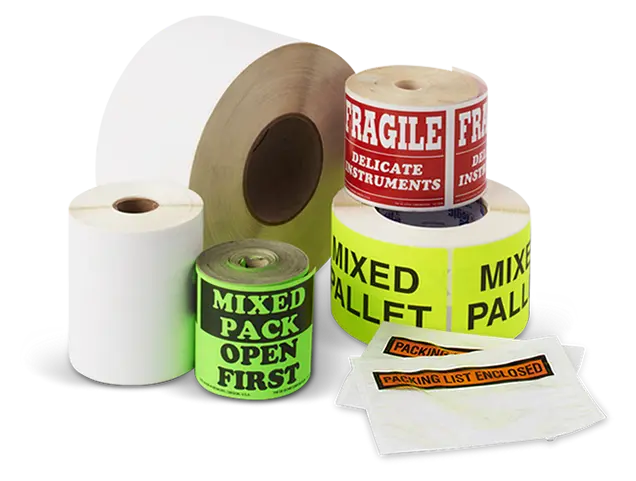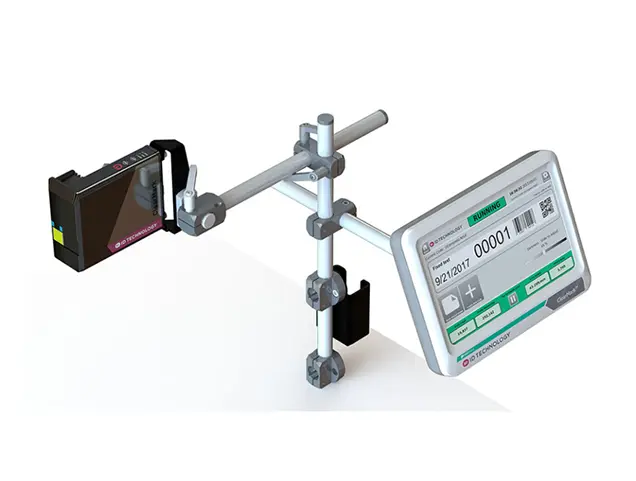When it comes to your label and printing requirements, we’ll ensure that you are getting the right products for your application. There are many options to consider, from pre-printed labels and print on demand to variable printing and fixed printing options. Choosing the right labels and printing option can help optimize your shipping/receiving, protection of goods, branding, and inventory management.
Packaging Supplies
Labels, Ribbons & Printing
CORE7 allows you to get quick delivery of the right products at the best prices. We do it by using Local inventory, volume buying and 200 years of expertise – giving you… Delivered.

Optimization
Learn about the different options for optimizing your labels and printing.

Labels
Pre-Printed Labels
If you have a specific message you are trying to display on your packaging, pre-printed labels are right for you. Utilizing these labels can help ensure that anyone handling your packaged product knows what safe handling instructions to use to keep your product and themselves protected.
Some examples of these are Fragile, This Side Up, Attention, Flammable, etc. You can also customize your own pre-printed labels to display your unique messaging.
Print on Demand Labels (blank labels)
Print on demand labels are a great option if you have an application that requires different messages or images on your packaging. Having the option to print your labels on demand gives you the creative control and versatility to print these images and messages.

Printing (InkJet)
Surface – Porous vs. Non-Porous
Porous surfaces have small, microscopic holes that allow your ink to pass through the surface you’re printing on.
Non-porous surfaces are materials like glass or plastic which do not have holes in the surface to allow ink to pass through.
Multiple Ink colors
Thermal Inkjet printers are easier to switch out, and your operators can do this themselves.
CIJ (Continuous Inkjet Printer) requires a service visit and must be replaced by a technician.
Application
Which product is best for your application?
Thermal Transfer Labels
Thermal Transfer Labels require a process that heats the backside of a label ribbon which causes it to melt and transfer the compounds from the ribbon to the label, creating a label on demand. Here are some considerations when choosing between thermal transfer labels and direct transfer labels.
- Label life greater than 1 year
- Can be exposed to high temperatures, continuous sunlight, and other harsh conditions- print/text will not fade
- Requires a ribbon resulting in operator change-overs
Direct Thermal Labels
Direct Thermal Labels do not require a ribbon and use a thermal printhead that comes into direct contact with the heat-sensitive paper, causing a color change in the material and printing the desired image. Here are some considerations when choosing between thermal transfer labels and direct transfer labels.
- A simpler process that requires no ribbon
- Label life less than 1 year
- Cannot withstand high temperatures, continuous sunlight, or other harsh environmental conditions
Paper
Paper is recommended for indoor use and offers a shorter lifecycle. This is a great label product to use on different surfaces, for example, corrugate, paper, packaging films, plastics, metal, and glass. There are coated and uncoated options to consider as well.
- Uncoated paper will perform well and be lower in cost.
- Coated paper labels are ideal for high-speed, high-volume environments and offers an exceptional print quality.
Synthetic Labels
Synthetic labels can also pair well with many different surfaces. Still, the key advantage of synthetic labels over paper labels is their ability to withstand outdoor weathering, moisture, and chemical contact. Synthetic labels offer a longer lifecycle because of this.
Toner
Toner is a fine powder that is used for laser printing. The most significant advantage of toner is that it does not get the paper wet like inking, creating cleaner prints and sharper images.
Ink
Ink is a liquid dye or pigment used for inkjet printers. This is a more common type of print product, as more consumers use inkjet over laser printing. Because of the liquid qualities of ink, they do print clearer for photographs and other high-quality-colored images.
Challenges
Here are a few ways to optimize your void fill.
My Labels Are Not Sticking.
Whether your application requires a label for a box or a label on a product, choosing the right label can be difficult. Since different products offer different textures and surfaces, it’s important to choose the right label that offers an adhesive that sticks successfully to your product.
I’m Experiencing Too Much Downtime with my Application.
Every application can require a certain amount of changeovers, but if it’s affecting your production rate, then looking at your options could help identify the right solution for you.
Printing: With print on demand application, there is an upfront cost when installing the printer, but long-term costs are lower than buying pre-printed labels. Printers will require cartridge changeovers, print head cleanings, and preventative maintenance, resulting in more downtime.
Labels: These can save time by having pre-printed labels and using them as needed. Although they may have a long-term cost associated with them, they can offer versatility, require no preventative maintenance, and have a lower up-front cost compared to printing.
Let us know how we can Help!
Reach out now to speak with one of our packaging specialists with questions about our Labels, Ribbons & Printing solutions.